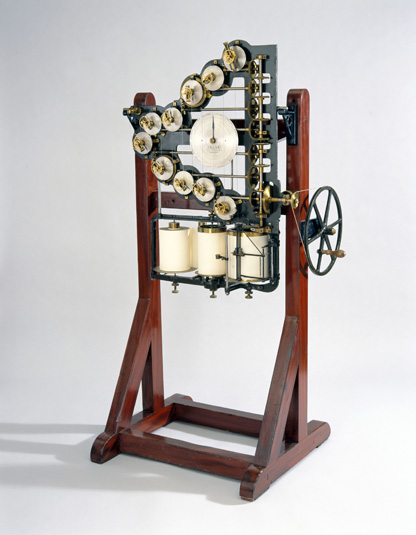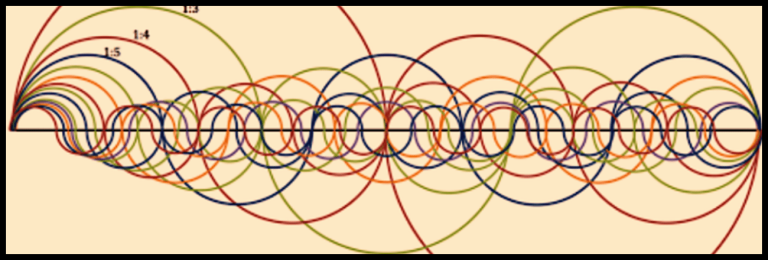The singing bicycle
I deeply appreciate, among other things, the satisfying noises a well-tuned bicycle produces as it rolls down the street. There is a certain joy in the silence of the drivechain broken only by the regular clacking of a free-wheel sprocket. The bicycle is a form of subversion and statement; it is an artistic choice from the moment it is assembled to the moment its occupant coasts gently to a stop at their destination. From participating in this activity, I have found an astonishing amount of freedom, agency, creativity and imagination. So, dear Reader, I ask that you employ these qualities here.
The drivetrain of a bicycle is the collection of components that allow the power produced by the rider to be transferred into movement. In its simplest form, it consists of the pedals, the crankset, the chain, the front sprocket, and the rear sprocket. Together, these can transfer an astonishing 98% of the power delivered by the rider to the rotation of the wheels (source: John Hopkins Gazette).
When a bicycle moves a given distance, it requires a discrete amount of energy to do so. If you are walking your bike down the street, this energy is simply the force required to roll the bicycle forward multiplied by the distance you and the bicycle move. However, when you ride a bicycle, you utilize the mechanical advantage of the gears in the drivetrain system. This allows you to rotate the wheels at a much faster rate than you are pedaling, but requires that you provide additional force to do so. This is a fact that is obvious to anyone who has ridden a bicycle; the distance you move the pedals is much shorter than the bike travels.

Relevant xkcd.
If you have a low amount of mechanical advantage (i.e. you are using a high gear on your rear casette), you'll find it much easier to pedal, but you won't be able to go as fast. If you are using a low gear, you'll find it harder to pedal but you'll be able to maintain a higher speed. This relationship is called the gear ratio, and it can be simply quantified by the number of teeth on your front sprocket divided by the number of teeth on your rear sprocket. Most bicycles have a gear ratio between 1.5 and 3.5, with lower ratios being much easier to pedal on and higher ratios being much harder. A BMX bike traditionally has a very low gear ratio, and a track bicycle optimized for speed and a competent rider will have a very high gear ratio.
Bicycles with shifters are able to change the gear ratio by changing gears on either the front and/or rear sprocket. However, single speed bicycles (like beach cruisers, urban fixies, or high-tech track bikes) are stuck to a single gear ratio. Another way to think of gear ratio is how many times your rear wheel rotates for every full rotation of your pedals. For me it's much easier to think about these ratios in terms of the angular diplacement, rather than horizontal translation. And when we consider the movement of a bicycle in terms of angular displacement over time, we find that we in fact have an oscillating system.
Interestingly, this is how humans first modeled and plotted the sine function. A contraption consisting of a physical wheel moving at a constant velocity was used to actually draw figures on long reams of paper. Multiple wheels were employed to provide the composite sum of many waves. These contraptions predated our understanding of the actual mathematics involved in such an operation (known as a Fourier transform), but were widely employed to track and model tidal patterns.

Source: Charles Petzold's Blog
However, returning to the bicycle, we can represent the rotation of the wheels as a sound wave. By proportionally scaling up the angular velocity (or frequency) of the rotation of a bicycle wheel, we can model it as a sound wave. By doing so for both the front and rear wheels, we find that each gear ratio has a unique harmony.
You can try this for yourself below. Input the number of teeth on your front sprocket in the first field, and the number of teeth on your rear sprocket in the second field. Then press the 'play' button to hear the sound of your bicycle singing :) Note: If your bike has multiple gears on the rear wheel, just pick one.
Front Sprocket:Rear Sprocket:
Besides this being a cute way to think about your trusty steel steed, there are some applications to this type of math! For example, on a fixed gear bicycle, one would try to avoid having gear ratio that sings a sweet song. Part of what informs our perception of a pleasant or dissonant sound comes from the harmonic series.
Sounds that form simple, interval ratios tend to be more pleasant to listen to. This is interesting, especially as it is cross-cultural. Nearly every musical practice worldwide incorporates the dominant fifth (3:2 ratio) and the octave (1:2) ratio. Yet on a fixed gear bicycle, this is exactly what we don't want. A gear ratio that is reducable to a low denominator will cause the rear wheel to develop wear in the same spot(s). In fact, the number of spots available for wear on a fixie is simply the denominator of the gear ratio. Of course, one could also choose to not do cool skids and whips around corners... but that wouldn't be any fun. Maybe a more reasonable suggestion is to learn ambidextrous skids so you can double your time between new tire purchases ;)
This page is hosted and created using exclusively open-source software, and is designed to use as few resources as possible. For information on the sound libraries used here, please visit the simpleTones.js GitHub page.
